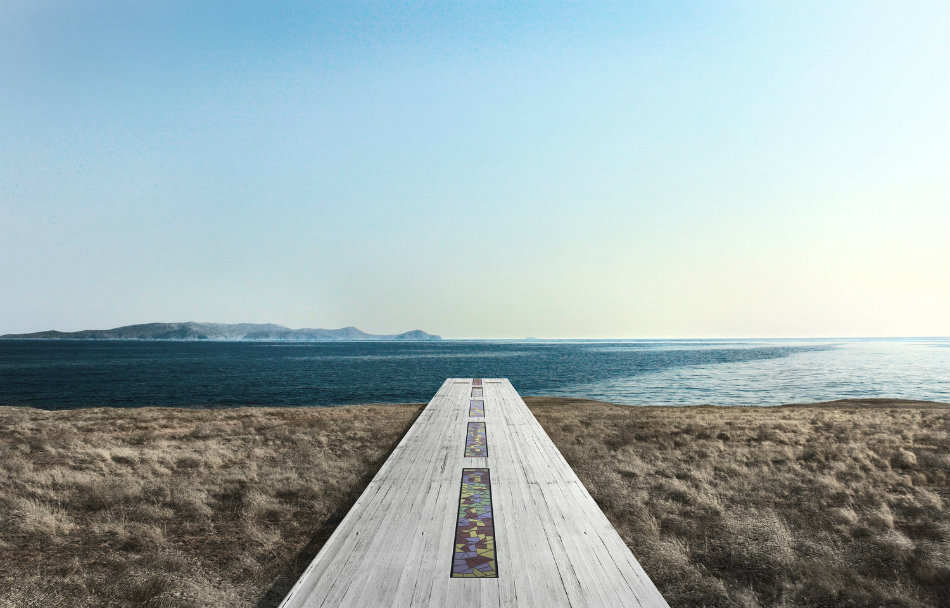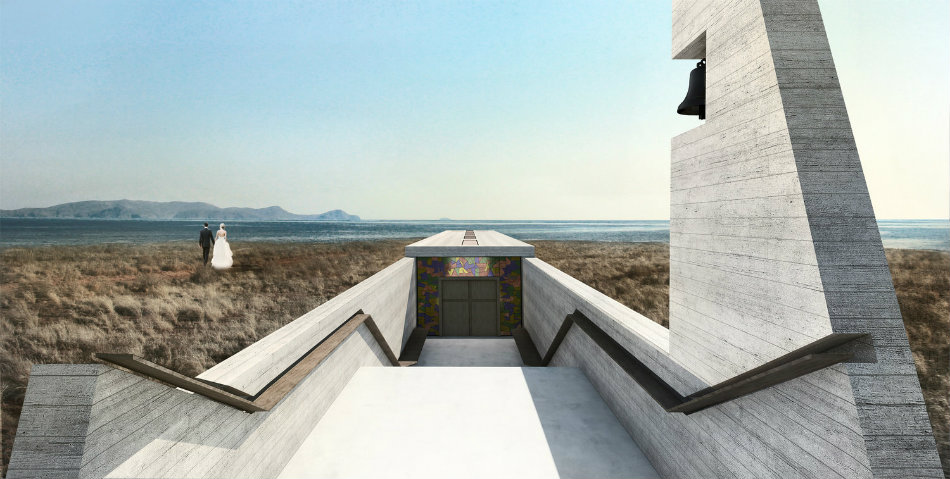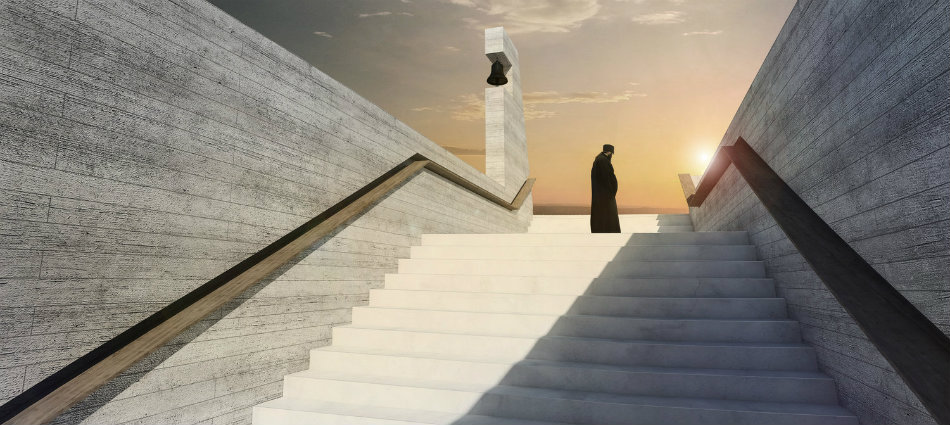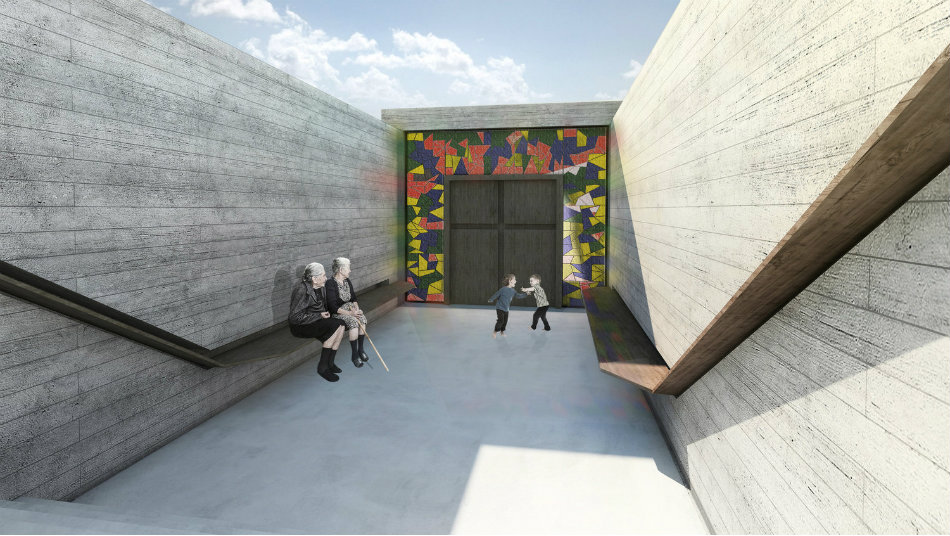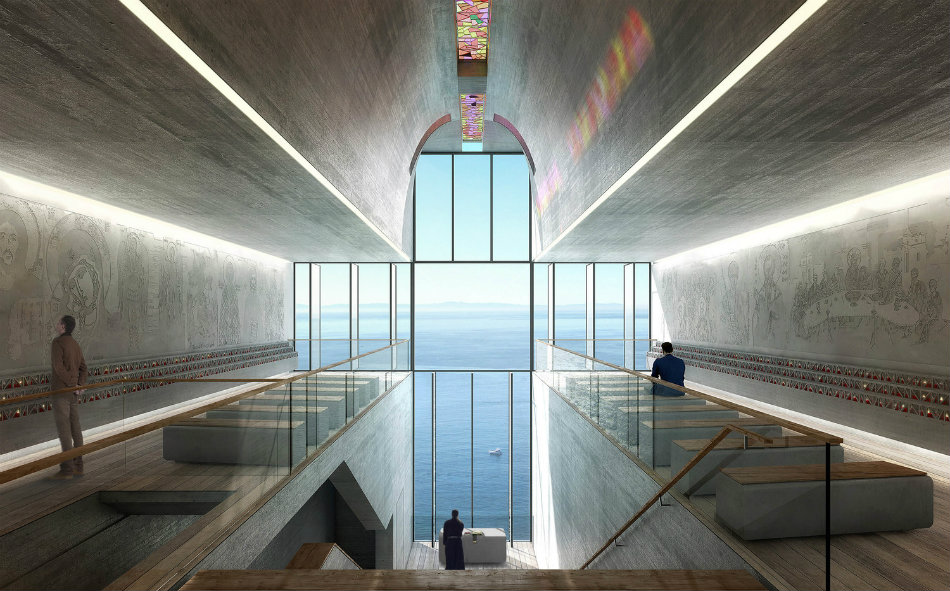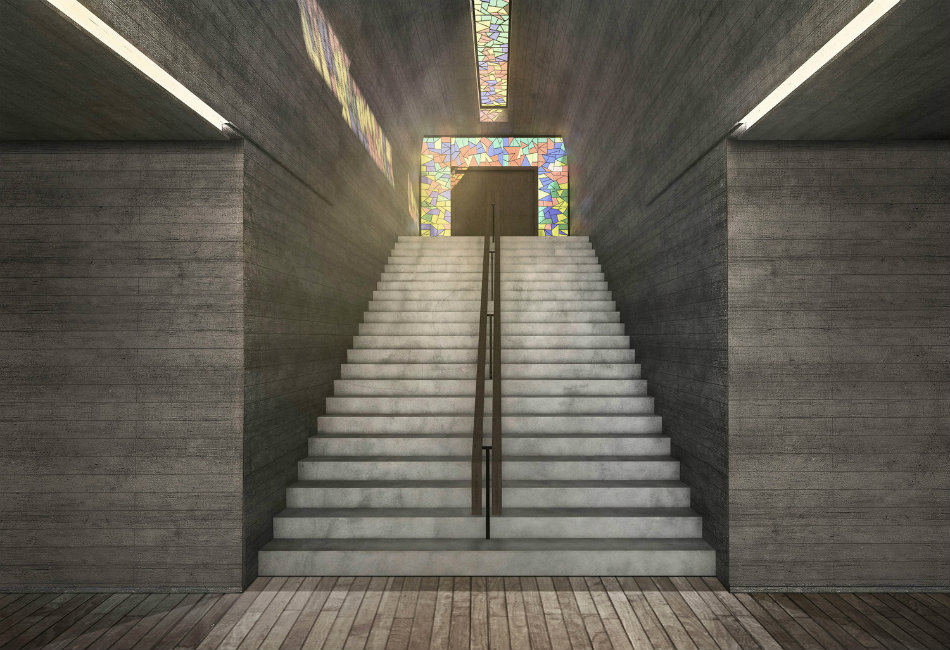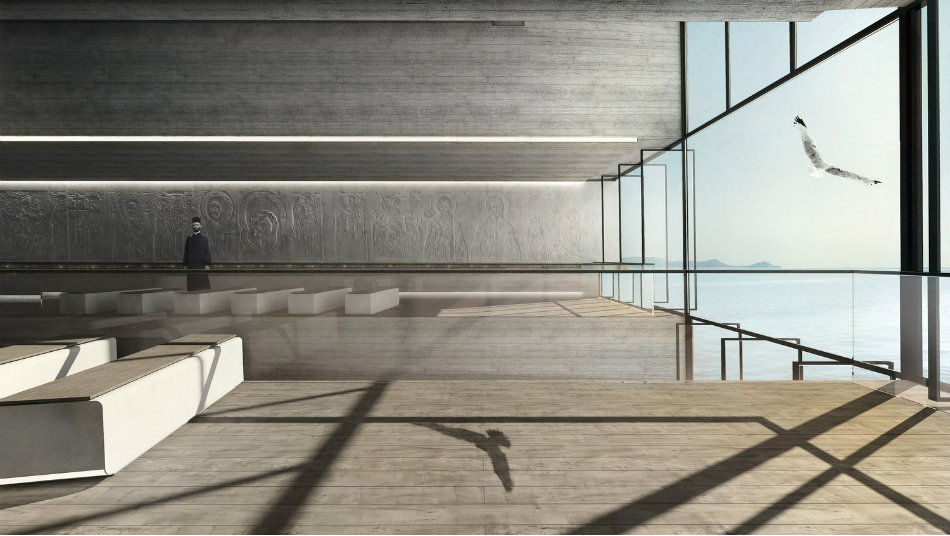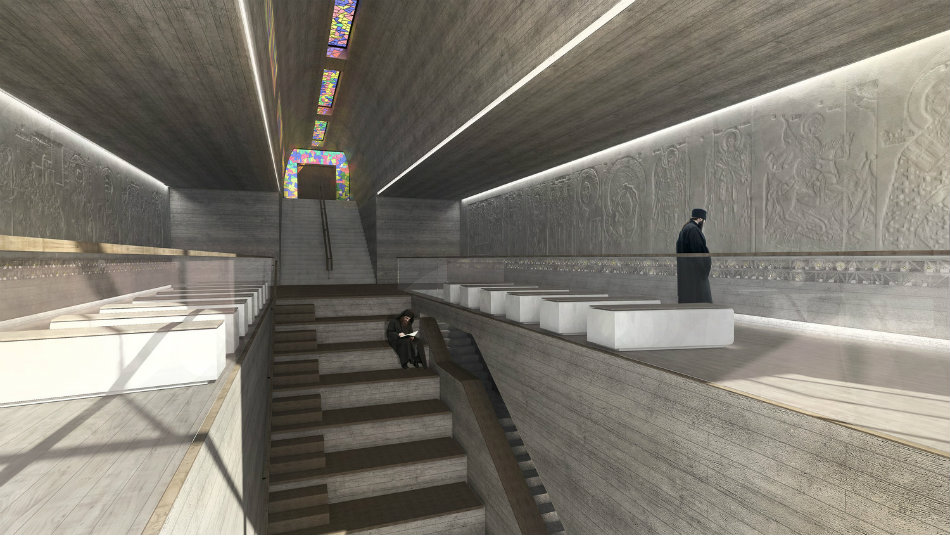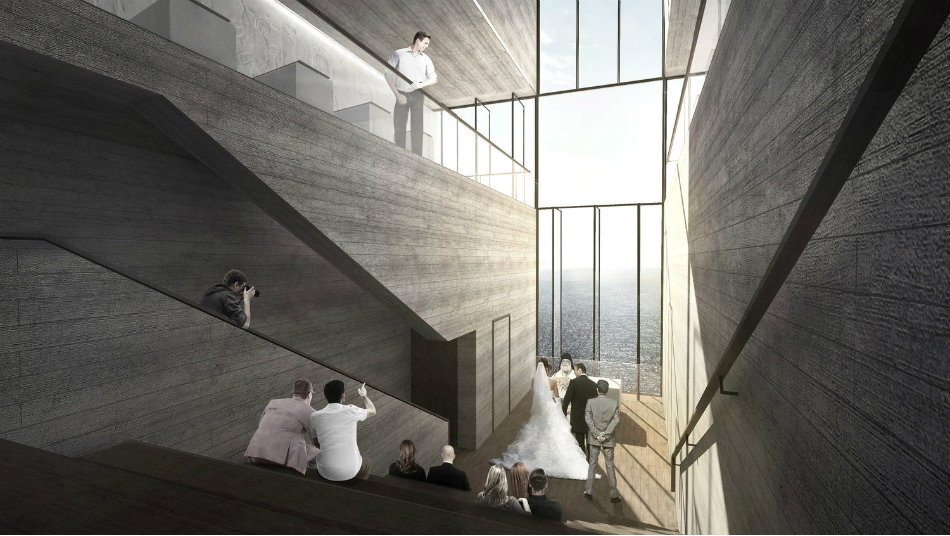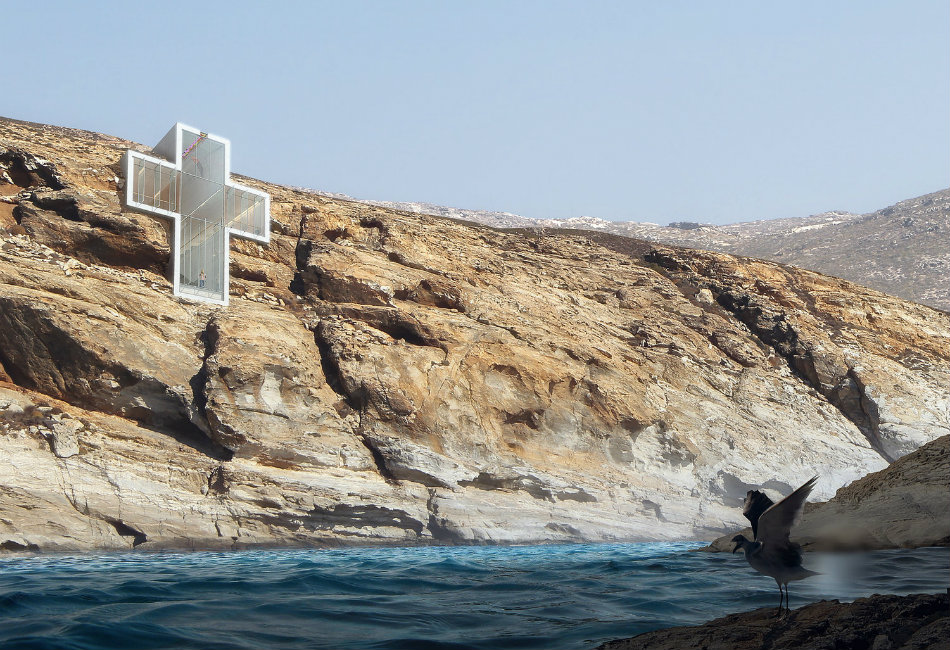The chapel of The Holy Cross is a timeless religious building, an interconnecting bridge between the past, the present and the future. It translates symbolism and millennia of tradition and belief into space with a materiality based on the simplicity and harmony of contemporary architecture.
Purity of belief is celebrated in this minimalistic design devoid of earthly distractive elements. The chapel is the third building of the Terra Mater trilogy of underground buildings. Proposed for the island of Serifos, it possesses a single cliff façade that faces the Aegean sea, positioning the human vis a vis with the beauty and magnanimity of creation. The chapel of the Holy Cross is a complete, evocative study of aesthetics, structure, function and engineering enhanced by tradition and featured in a contemporary style, which thoroughly detailed awaits solely for its realisation.
The chapel of the Holy Cross continues our challenging vision of innovative architecture, where innovation refers to ambience and materiality. Its pure form allows for the magnificent view and the game of light and shadow to take center stage. The chapel is constructed with simple materials: wood, glass and concrete, the convergence of the surrounding earth. The landscape is arid, integral to the underlying concept and matching perfectly to the rough finish of the unclad bare concrete surfaces of the chapel.
In essential simplicity, the chapel is defined by an extruded cross that creates the space, organized in three levels. The idea of integrating this religious symbol in church architecture is not new, yet never before has it been realised in a vertical orientation. To this date, the cross has only been incorporated in a horizontal orientation in the design of cross-shaped floor-plan churches (Cross-in Byzantine rhythm). Apart from this historical use, cross-shaped openings are also used as illuminating features on the walls of several contemporary chapels.
Such as with all underground buildings, the chapel benefits from the thermal insulation of the surrounding ground to achieve a temperature stable environment. The optical impact of the building on the landscape is minimal, with only one façade on the cliff side and the integrated bell-tower extruding from the ground level. At nighttime, the illuminated chapel is visible from a distance, functioning as a lighthouse for believers and travelers alike.
Eastern light penetrates the chapel through the front glazed façade and the tinted “vitreaux” glass that runs along the spine of the bulding, culminating to the western façade with the rotating wooden door. The dynamic light patterns embrace the bare concrete with colorful refractions, a reverent homage to Le Corbusier’s “Ronchamp” church and Tadao Ando’s “Church of Light”. After passing the wide, cross-engraved rotating door (bearing it’s the axis in the middle) you encounter a breathtaking view of the sea, while you are spiritually transported by the solemn and transcendental atmosphere.
The remaining space is bare, pure and humble allowing for quiet and tranquil contemplation and prayer. The inner details: The Holy table and the auditorium, which is comprised of concrete benches finished with warm wood, are complementary to the simplicity of materials and design . The iconography decorating the walls of the building is literally ground-breaking, as it is three dimensional and cast in the concrete body of the chapel. Images are “sculptured” on the concrete wall and despite of absence of colour and precious metals the humble light entering the chapel from the roof and façade reveals their shape and bestows them with lively fluidity. And while the images retain the style of fresco’s present in traditional orthodox churches, the novel media integrates them with the rest of the building, as subtle references to tradition in a contemporary landmark. The final aspect of this building is a second concrete staircase leading straight to the bottom level of the auditorium, where one can find the sanctuary (this without a Templum) and a storage room on the left side of the sanctuary where the Evangelion and the Holy Grail can be stored .
In this final part of our Terra Mater trilogy OPA aims to integrate and translate the traditional symbols of belief in contemporary architecture, setting a unique platform for the communication between tradition and innovation.
